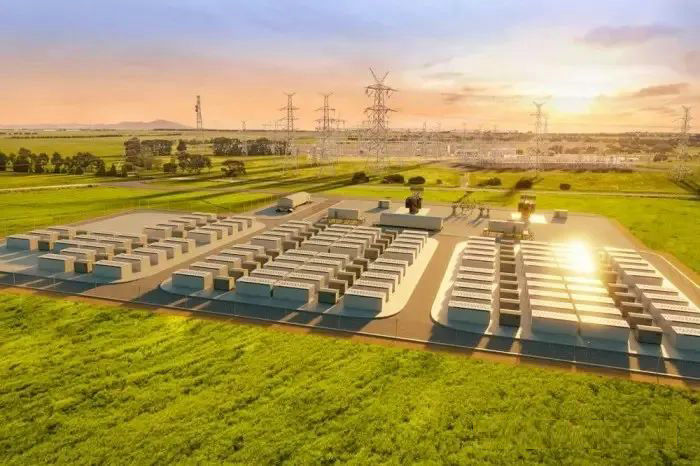
The "shared energy storage" business model can promote the maximization of economic and social benefits of the energy storage industry.
Auxiliary service market model
With the further improvement of the policy, the relevant competition mechanism of the electric power auxiliary market has gradually matured, and the auxiliary service market will become one of the most promising business models for the shared energy storage on the grid side.
Each power grid company takes the lead in organizing the investment and construction of energy storage projects, and carries out the daily operation and maintenance of the system in cooperation with internal power grid enterprises or with third-party operation service providers. Under the unified dispatching of the power grid, various market entities in the auxiliary service market enjoy various energy storage services according to their respective needs and pay the relevant service fees.
Energy storage is a high-quality FM resource with good economy and strong real-time performance, which can provide FM services for various types of generating units (old thermal power units, renewable energy generating units, nuclear power units).
By introducing the bidding mechanism of auxiliary service market, energy storage can directly participate in the competition of auxiliary service market, and gain income by providing various auxiliary services such as peak shaving, frequency modulation, black start, emergency power response, etc. The income level is determined by the market.
Virtual power plant mode
The virtual power plant mode integrates the energy storage systems of various users, optimizes the system operation through advanced technology, and participates in the auxiliary services of the power grid to obtain application benefits.
It is more suitable for power grid enterprises with professional technical strength to lead the implementation. The distributed energy storage system, which is subject to unified dispatching and management of the power grid, can not only participate in the power market to gain revenue through frequency modulation, reserve capacity, etc., but also help the transmission and distribution system to play its multiple values in delaying the expansion and upgrading of transmission and distribution, voltage support, demand response, etc.
In the virtual power plant mode, the system platform that can aggregate the energy storage system for analysis and optimization control is very important. Each power grid company can build a virtual power plant project access platform to obtain technical data from the building load, price information from the market, and real-time management of massive information. When demand response is required, the platform can find optimization points to help users reduce costs and increase profits.
Contract energy management mode
Contract energy management mode is a relatively mature business operation mode, which is generally applicable to energy-saving projects with stable cash flow income.
Energy storage projects can also optimize reactive power regulation and reduce transmission and distribution losses in the process of peak load shifting and valley filling. Therefore, these energy conservation services can be quantitatively evaluated, and the application of contract energy management mode can be explored. Power grid enterprises or large power consumption enterprises can share the benefits of energy conservation and consumption reduction with the owners of energy storage projects.
Large-scale enterprises, parks and other centralized energy storage providers can choose the contract energy management mode, evaluate the value of energy conservation benefits generated by energy storage according to the authoritative third-party energy conservation evaluation agency, and the park operator and other energy conservation beneficiaries will transfer part of the energy conservation benefits to the energy storage operator. Each grid company can play the role of energy storage provider or energy storage operator under the contract energy management mode.
Spot trading market model
The energy storage on the grid side can also obtain electricity revenue through the spot market trading mode.
Each power grid company can be responsible for daily operation and maintenance as an energy storage operation service provider, and participate in the spot market transactions of electricity, and use the energy storage facilities to arbitrage the price fluctuation difference.
The operation service provider carries out the purchase and sale of electricity in the spot electricity market to obtain the price difference income. If the shared energy storage provider and the operation service provider are not the same entity, the benefits will be shared according to the agreed rules.




